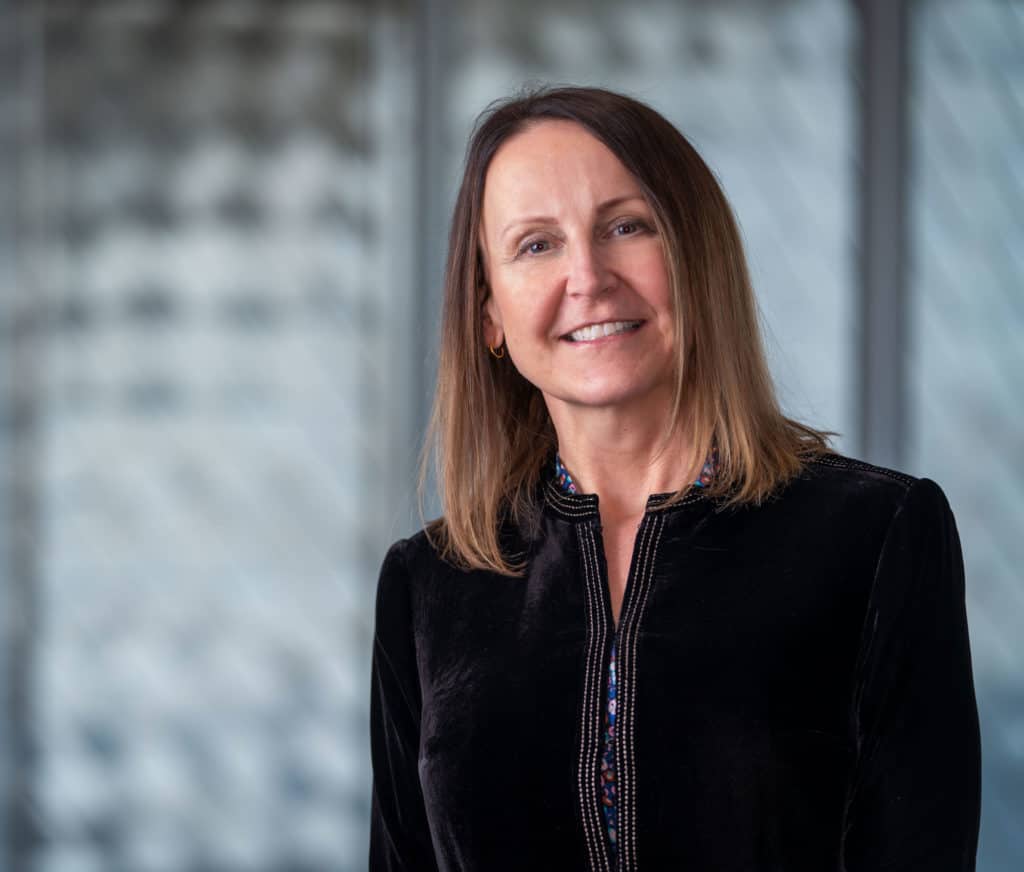Leadership
Supply Chain Excellence in a Time of Global Disruption
A Conversation with Louise Dalton, Global Supply Chain Director
When Louise Dalton moved into her role as director of Timken’s global supply chain in the third quarter of 2020, she faced a laundry list of challenges. Large regions of the world had experienced stay-at-home orders earlier in the year to help contain the coronavirus pandemic, and when things opened back up, people needed bearings.

“Customer demand went through the roof, and we had to respond,” says Dalton.
Dalton was tapped to lead Timken’s global supply chain organization through challenging times, partly because she’d proven herself to be a creative problem solver with a reputation for fearlessness.
She’s also, as she says, “a core supply chain person.” Before getting her MBA and spending time at headquarters overseeing global distribution and analytics, she had managed the supply chain for aerospace, one of Timken’s most critical business units.
We spoke to her about Timken’s supply chain strategy in the pandemic era and going forward.
Q: What are Timken customers looking for in a supply chain partner?
Dalton: Supply chain excellence is all about service. Putting quality aside—clearly, we must deliver quality products—it’s about our agility and our ability to respond and get our products in the right hands at the right time.
Transparency and trust are also key. We have an amazing global supply chain team who are passionate about serving customers. At the same time, our unified SAP enterprise resource planning (ERP) platform is the foundation we all build and act upon. It’s a crucial piece, seamlessly connecting Timken business units with each other and with customers and vendors around the world.
When I joined Timken, we were finalizing our SAP deployment, which set the supply chain organization up for transformation over the next decade. Before that, Timken facilities and business units had each run their own ERP instances, and those systems didn’t speak to each other.
The unified SAP platform brought end-to-end transparency to Timken’s supply chain, so that everyone was speaking the same language and could identify quickly where products were being made anywhere in the world.
This platform has greatly accelerated our ability to respond. Now, as a market expands, we can ramp up faster than our competitors. When a market contracts, we can make decisions and react more quickly.
Q: How has that transformation improved communication with customers and suppliers?
Dalton: Our larger original equipment manufacturer (OEM) customers communicate with our ERP via electronic data interface (EDI). When demand comes in, it updates SAP and off we go. Aftermarket distributers also use PT Place, Timken’s B2B e-commerce platform.
We are currently implementing SAP Ariba, a tool to help us send those customer forecasts through to our vendors, so they can quickly commit to providing external materials. Ariba is enhancing communication and speeding up Timken vendor transactions.
From a digital aspect, robotic process automation (RPA) is automating highly repetitive, high volume tasks. This is streamlining work in critical supply chain functions such as customer service, and warehousing.
Automating mundane, routine processes also frees up Timken associates to focus on work that requires a higher level of skill, which is critical when facing unexpected events, such as a pandemic. In 2021, we need people to be making decisions that are outside the norm. The more automated and seamless the processes, the more time you have to actually analyze information and chart the course.

Timken is increasingly integrating power transmission product lines, such as Timken Belts and Drives Chain, into SAP.
Q: How do those capabilities translate to Timken’s power transmission product lines?
Dalton: We’re working through the process of migrating many of our acquisitions off their legacy ERP systems and into SAP. We’ve started generating demand and inventory plans for Timken Belts as well as providing customer service for Belts and Drives Chain products.
As these acquisitions become fully integrated into SAP, it will help us capitalize on the original synergy case for each business and place proven Timken processes and infrastructure fully behind those organizations.
Extending the SAP platform across these product lines also gives us bench strength. If we’re all using the same system, then someone doing materials and requirement planning for Lovejoy can easily move into the bearing business to broaden their skills and experience. We gain talent flexibility and diversity when we’re all using the same foundational business system and processes.
Q: What are your priorities going forward, as you make your mark on the supply chain organization?
Dalton: Supply continuity is a big focus for supply chain leaders all over the world right now. We need to know that our supply chain will remain strong across business cycles. Unfortunately, customer service for many organizations have suffered over the past year.
I’m working to address that issue for Timken by introducing tool sets that give us greater visibility into the supply chain. Continued data quality improvement is a parallel focus, to help us leverage those predictive tool sets with confidence.
Getting the talent right for the work is key. As we introduce more automation, associates can focus on value-added decision-making and increase accuracy and agility.
We remain focused on Timken’s core competencies—the ability to run a tight supply chain and produce premium-quality products—and we will continue to build on the SAP platform to take full advantage of that technology.
______________________________________________________________________________________________________________
The world keeps changing, but Timken’s commitment to premium quality remains as strong as ever. Learn more about the structures and processes that help us make sure the company maintains those standards around the world.
Last Updated: 2021/08/19
Published: 2021/04/1
